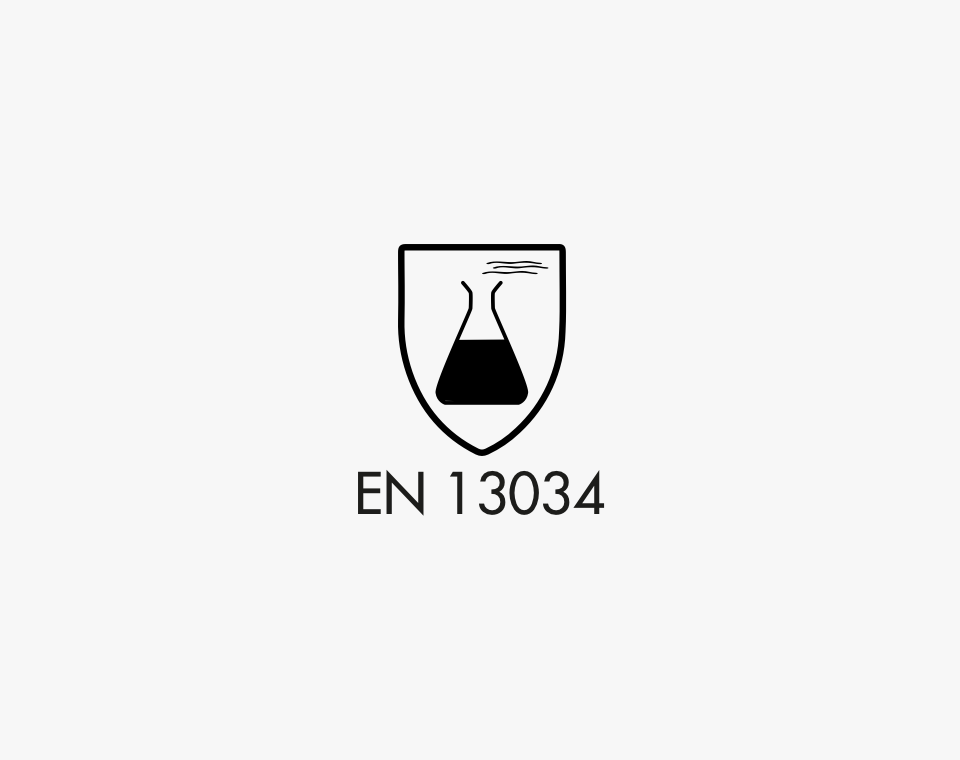
European standard EN 13034 type 6/PB[6] specifies the requirements for limited-use or reusable chemical protective clothing offering limited protection.
Category 3 PPE, garments complying with EN 13034 type 6/PB[6] are designed to provide protection in the event of probable exposure to light sprays, liquid or low-pressure aerosols, or light splashes, for which a total barrier against liquid permeation (at the molecular level) is not required.
EN 13034 type 6/PB[6] covers both:
Liquid repellency is achieved by a fluorocarbon finish on the base material. This water-repellent finish must be maintained every time it is washed, by professional re-impregnation with the fluorocarbon. EN 13034 tests are carried out not only on the fabric(s) making up the PPE, but also on the finished garment to determine the performance of seams, joints and assemblies. Performance levels must be achieved in all of the following areas.
Various chemical compounds are used for repellency and penetration resistance tests. Garments complying with EN 13034 must have, for at least one of the chemical compounds tested, a repellency capacity of over 95% (index 3) and a penetration resistance capacity of less than 5% (index 2).
Chemical hazards only: Chemical industry, fertilizer industry, pesticide industry, pharmaceutical industry, cosmetics laboratory, industrial maintenance, industrial painting, etc.
Combined chemical, fire and other hazards: Petrochemicals, cosmetics laboratories, tank cleaning, industrial cleaning, industrial painting, refineries, metal processing, energy transport, etc.